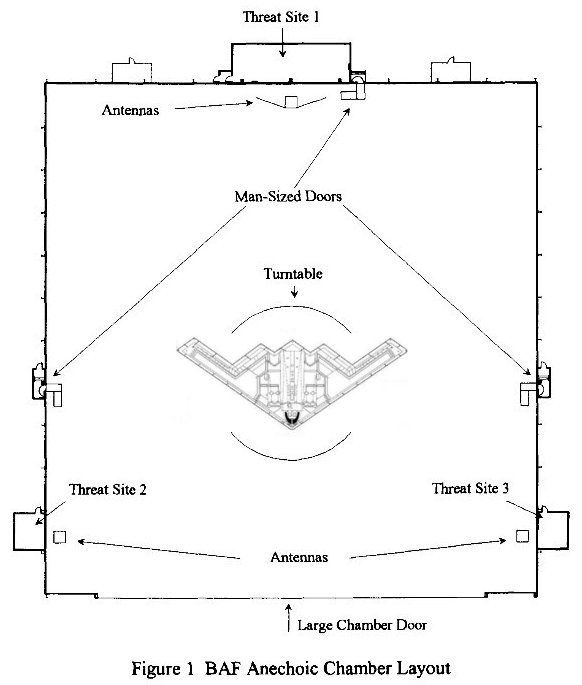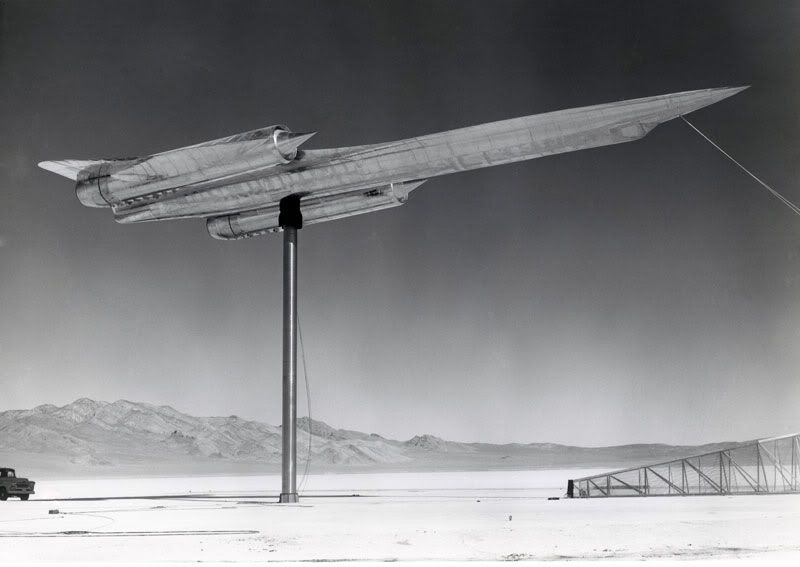Unless you know more about how to measure RCS, your skepticism and attempts to use arguments unrelated to the physics of stealth shaping is meaningless in assessing just how stealthy the J-20 is.
On an irregular (but symmetrical) body like an aircraft, the only way of knowing the body's true radar cross section (RCS) is via an electromagnetic (EM) anechoic chamber...
This is the Benefield Anechoic Facility in Edwards Air Force Base: the largest chamber of its kind in the world—a room in which RF and sound signals don't bounce off the walls, so you can get clean radio frequency testing on all kinds of gear. In this case, electronic warfare systems in huge toys like Hercules, B-1B and B-2 bombers, Raptor fighters and all kind of airplanes.
I have been in there many years ago and it was quite an experience.
An outdoor radar range will not give you a very accurate idea of the aircraft's RCS because the aircraft itself will reflect all sorts of 'dirty' EM sources such as TV, radio, cell phone, and even cosmic background radiation. Worst is if the range is near an airport.
An indoor EM measurement facility can also contaminate the aircraft's RCS figure if the interior is not absorbent. What happens is that a portion of the radar signal, which is conical shape and not a 'beam' like widely believe, will reflect off the aircraft and back to the receiver/observer, reflect off the interior walls and back to the receiver/observer, reflect off the interior walls then off the aircraft which will return to the receiver/observer. In other words, the non-absorbent interior is even worse of a measurement than the outdoor range.
The absorber triangular cones or spikes that lined Benefield's chamber are shaped that way for the same reason that made up radar detection: reflection. Geometry says the angle of deflection is the same as angle of approach. Each time an EM signal impact the triangular absorber cone, not all of the signal will be absorbed, a portion of that will reflect off the cone's surface. That deflection angle should be towards the other cones. So the intention here is to have any radar signal that deflect off the aircraft that heads towards the walls are absorbed as much as possible, leaving only one signal that is the true and as uncontaminated as possible that came off the side that is facing the receiver/observer.
Now...Since we know that not all of the signal will return to the receiver/observer, which we pretend ourselves as the source 'threat' radar, we would be interested in how the aircraft would be seen if there are other 'threat' receivers looking at the same aircraft, keep in mind that we are still looking at an irregular but symmetrical body...

We can bombard the aircraft from a single 'threat' source direction or from multiple directions and measure the aircraft's RCS from diverse aspect angles. We can rotate the aircraft while we are bombarding the aircraft from these different 'threat' sources. Because the interior walls are lined with absorbers, each 'threat' receiver/observer will see only the signal that came off the aircraft, not signals from the walls, not signals from the walls that reflect off the aircraft, not signals that from the walls that reflect off the aircraft that reflect off the walls again before coming to the receiver/observer, etc...etc...And keep in mind that this is happening at the speed of light. This is why we need an EM anechoic chamber to know true, as in %99.999, any RCS measurement of any body.
High end, as in 'snobbery', speaker manufacturers uses audio anechoic chambers to measure their products...
Since 1982, Axiom has been an integral part of the research into psycho-acoustics and the relationship between loudspeaker anechoic measurements and real-world listening tests.
It is only after we know the %99.999 true RCS value of an aircraft that we now move to outdoor radar range measurement.
Like this from long ago...
Notice the aircraft is upside-down and without its vertical stabs.
Outdoor radar range measurement allows us to know how the aircraft's RCS increases in a 'real world' EM rich environment. That was how the F-117 was supposedly 'detected' when it was a bird that the radar operator was seeing on his scope. Benefield's interior reflectivity figure is a secret but it is rumored to be below that of cosmic background radiation. Basically, they measured an empty chamber and recorded that figure to be the baseline for an occupied chamber. It is also rumored that the F-117's frontal aspect is %1 above Benefield's interior reflectivity figure.
There is no agreed upon standard for what make a 'stealth' aircraft so China and Russia are free to call their aircrafts any label they want. But it is also true that the US have set an unofficial standard with a clean F-16 as 1m2 at 100-150km. That is the effective range for most fighter class radar systems that can give reasonably accurate target information.
And this is how we measure an aircraft's RCS.



